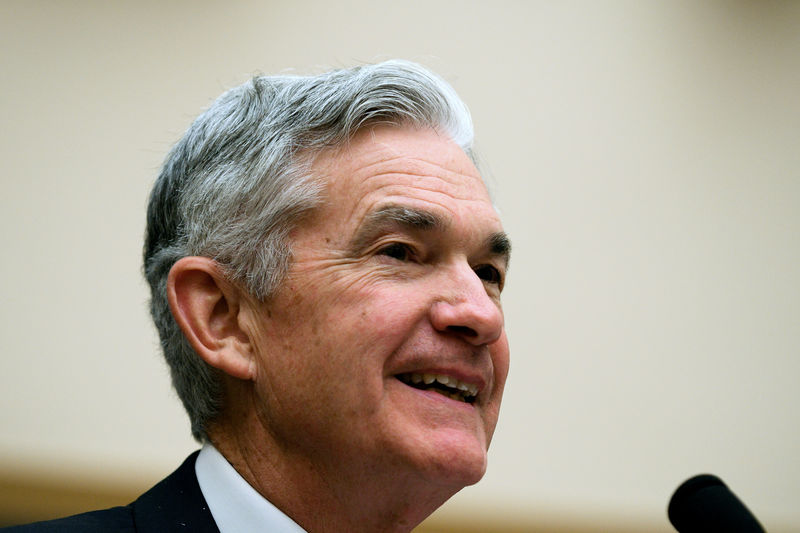Investing.com — President Jerome Powell is set to potentially deliver fresh clues on monetary policy later this week, but while many aren’t expecting the Fed chief’s remarks to be laced with the warning of the “pain” from last year, there are worries that he may tee up the idea of steeper longer-term interest rates.
Chair Powell’s remarks are unlikely to carry the same “pain” warning as last year, Goldman Sachs says, but it seems the overall message will still be one of “seeing the job through.”
For the Fed, ‘seeing the job through’ likely resembles an economy achieving below-trend growth, and a pace of inflation that is clearly showing a sustainable downward path.
Getting the job done on inflation, however, may also force the Fed to raise its longer-run or neutral rate – a rate at which neither boosts or hinders economic growth – implying a steeper path ahead for .
A possible shift in thinking on the neutral rate deserves attention, Morgan Stanley says, because it would imply a shift in the expected path for the policy rate and thereby the yield curve as a whole.
Bond markets caught up in fears Powell to tee up higher neutral rate
Markets, however, aren’t waiting in the dark for fresh remarks from Powell. The bond market appears to be preparing for a more hawkish monetary policy road ahead, paved with higher-for-longer rates as hopes of seeing early-year rate cuts along the way fade.
The jumped to its highest level since 2007 on Monday as jitters grow that Powell may sow the seeds for a higher neutral rate.
Policymakers in June forecast a median estimate of the neutral rate of interest of 2.5%, implying a real rate of interest, or so-called r* or “r-star,”– derived by subtracting the Fed’s 2% inflation – of 0.5%.
“Conceptually, if the policy rate is above r*, then monetary policy is slowing the economy, and if the policy is below r*, it is stimulating the economy,” Morgan Stanley said in a note.
This real neutral rate of interest hasn’t changed since 2019, and following the strength in the post-Covid economy that is less interest-rate sensitive, some have been calling for a higher neutral rate to push policy into restrictive territory, helping to curb growth and inflation.
“The household sector is in great shape…has a lot of excess savings and a good employment backdrop, so the economy is less interest rate sensitive as it hasn’t been borrowing to invest,” Phillip Colmar, global strategist at MRB Partners told Investing.com’s Yasin Ebrahim in an interview last month.
“This is not a credit driven cycle, so it takes a higher cost of capital to choke the economy,” Colmar added.
Powell to keep ‘pivoteers’ at bay, but acknowledge progress on inflation fight
The string of recent data including a stronger print for July, showing the consumer remains resilient, indicates there is “little justification” for Powell to turn more dovish at the symposium, MUFG said in a note.
While the pivoteers, pining for sooner-rather-than-later rate cuts, aren’t as vast in numbers nor as vocal as in recent months, there are positives that the Fed chairman will gladly espouse when he takes center stage on Friday morning.
In contrast to a year ago, when the Fed chairman warned that higher interest rates will “bring some pain” for the consumer, Goldman Sachs says the current backdrop is much more reassuring and a “soft landing looks more plausible now than at any point over the last year.”
Read the full article here








